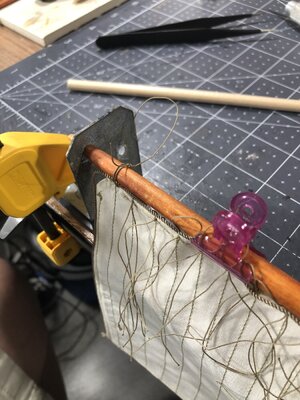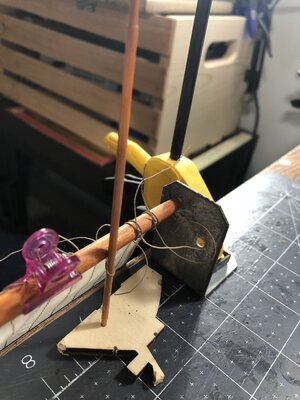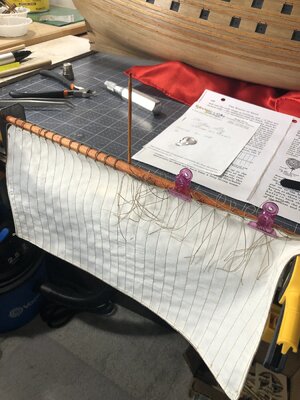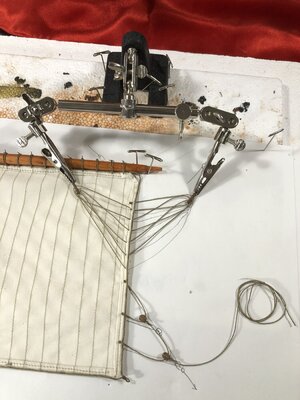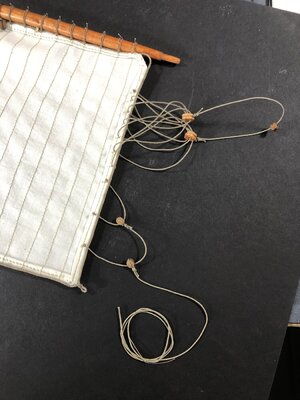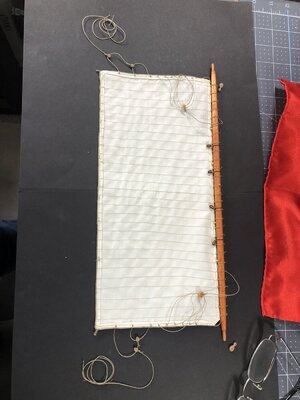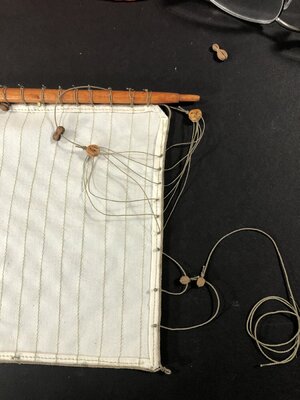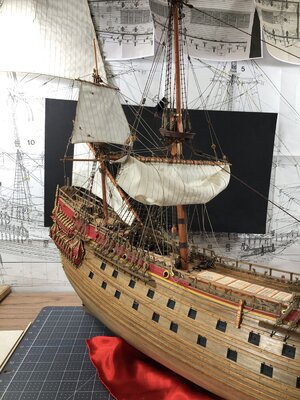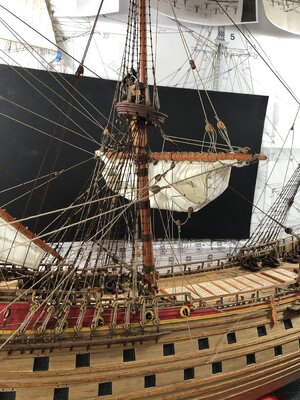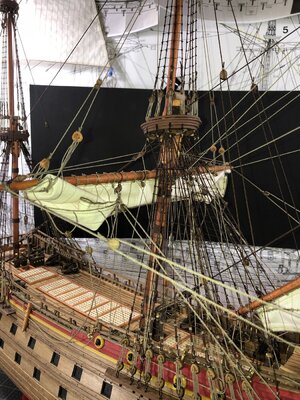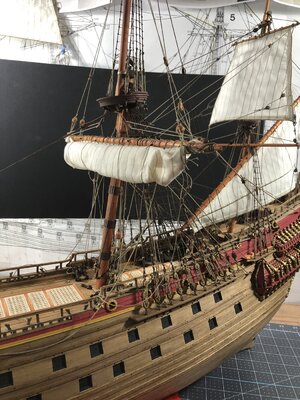Good afternoon.
Moving on to the main sail I began with the oh so fun (not) roband attachment. I realized the larger lower sails have a double configuration per roband so after a while (read long time), I figured out how to jig this up for the most efficient way to construct. I threaded the ropes thru the bolt rope even before setting the unit into its jig. I now realize I should have used the doubles on the lateen yard but too late now and I'll just leave it the way it is.
View attachment 325060View attachment 325061View attachment 325062
Next, I set the Bowlines and you see my first attempt at the Martinets. The line size relation between the two just looked way off, the martinets line looked too big, and my attaching scheme just didn't set right. I had 4-hole handmade euphroes in this set up as well.
View attachment 325063View attachment 325064
So, I redid the martinets using a smaller 0.50mm rope instead of the 0.70mm, replaced the euphroes with a set of modified deadeyes, and glued two 5mm single sheaves together to act as a sister block on the bridal. In lieu of Fred Hockers use of euphroes I decided to use Anderson's version of deadeyes in the bridal set.
If you look closely, you can see the buntline guides at the foot of the sail.
View attachment 325065View attachment 325066
You may notice I did not set cringles or reinforcement patches at the bowline attachment. This is because I intend to partially furl this sail and I did not want to contend with the extra edge stiffness those items would undoubtedly create. I still have pendants to set on the ends but have to wait on an order of 7mm blocks which I ran out of.
Thanks for checking in and happy modeling to you all.





